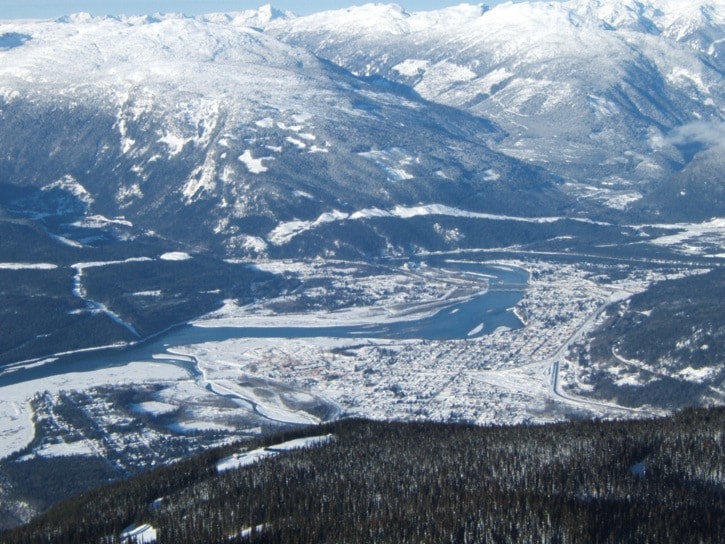The Naturalist by Michael Morris
The first residents of Revelstoke referred to Mount Mackenzie as “Twin Buttes” because from town it appears to have two equally high summits. This is a trick of perspective. What appears as a northerly summit is just a shoulder to the main peak, which is about 100 meters higher. This was first determined by railway surveyors Otto Klotz and J.J. MacArthur who climbed it in 1886.
Early surveyors invested their efforts in summits that would give them the best view in as many directions as possible and they were well rewarded on this peak. Topographical surveyor A.O. Wheeler also chose this summit for his subsequent survey in 1902. He camped in South Bowl and while eating breakfast saw “a caribou, a royal buck, with the finest set of antlers I have seen, approaching to with in a hundred yards. For the sake of a trophy, I would have given much for a rifle.”
Naturalist Ernest Thompson Seton also worked the area around the same time collecting specimens. He was the first to scientifically describe mountain caribou, finding the largest weighing 600 pounds. There are no longer caribou on this mountain, but there were indications of grizzly bears and mountain goats when I camped there in the 1990s.
The slope immediately south of the upper chairlift has the most spectacular display of glacier lilies, many with multiple flower heads. This is a consequence of many years of disturbance by grizzly bears, digging the ground much like a rototiller. The starchy corms of these flowers are a preferred bear food in early summer. Corms are irregular shaped bulbs that are the stored energy of the plant, similar to flower bulbs.
Easier to see are the early nesting birds. Two ravens are building a nest that is visible from the gondola line-up. Nels Nelsen Lodge guests will have an even better view of this family until the chicks fledge in early summer. Expect the raven chicks to be loud in their demands for food. On the upper slopes, Gray Jays nest in April while fresh snowfalls still occur. They can be seen retrieving stored food from last summer. The chicks could hatch before the last day of the ski season.
The most widespread evidence of animal activity is seen from the ski lifts in the early morning. In spring, a common snow condition is for a hard crust to develop during the night. When this is followed by a light dusting of snow, animal tracks from the night before are sharply defined, better than at any other time of year. Squirrel, marten, coyote, snowshoe hare tracks are common. Wolverine tracks appear on occasion.
P.S. Mount Mackenzie is named for Canada’s second Prime Minister, Alexander Mackenzie who served from 1873 to 1878. A practical-minded stonemason, he opposed the extravagant promise to British Columbia of a railway link to eastern Canada. His main accomplishments were the introduction of the secret ballot, the Supreme Court, and the Auditor General.
